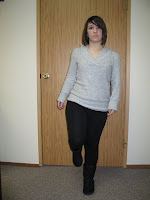Pain is the body’s way of grabbing the mind’s attention and demanding action. For short-term situations, this relationship works well. But when pain lasts for weeks, months or even years, the ability to take action is overwhelmed and confused by the failure of remedy after remedy. The Pain Chronicles by Melanie Thernstrom is beautifully written and explains the latest analgesic research in everything from medicines to genetic disposition to brain scans. It offers invaluable options for anyone who struggles with chronic pain.
The following summarizes the most insightful and newsworthy topics from the book. I invite you to join me for a book club discussion of
The Pain Chronicles on Wednesday, February 23rd from 5:00 to 6:45 at the King County Library Administrative Service Center.
1.
Damage to pain circuitry results in greater pain. While acute pain is a protection sign, ongoing distress can create a new disorder in the body’s pain-modulating system. Nerves that have been transmitting ongoing pain messages can amplify the signal, shouting when only a whisper is needed. Also, damaged sensory nerves may not repair optimally and then fire haphazardly. The longer pain lasts, the more likely the pain-modulating system will be damaged – including aging of the brain.
2.
Pain relief improves healing. In other words, toughing it out through an injury doesn’t improve your chances for recovery. The most dramatic example is when anesthesia was first introduced for surgery. Patients who had took advantage of the advance (or more accurately, patients whose surgeons offered this alternative) tripled their chances of surviving the surgery.
3.
The power of the mind to mitigate pain has been potent enough to mimic anesthesia for patients. Franz Mesmer, a German physician in the middle 1800s, successfully hypnotized over a hundred patients to feel no pain during surgery. (This is where the word mesmerize comes from.) Acupuncture is sometimes used for anesthesia in China and its success can be attributed to patients’ belief as well as its effect on the energetic channels. Like the placebo, mind control over pain requires the patient’s desire to be healed and belief in the person administering the treatment.
4.
The relationship between the client/patient and her provider has as much to do with the possibility for recovery as the treatment. Patients who believe that their provider is personally invested and will do everything to help them are more likely to believe in and follow the treatment, which increases its chances of success. Likewise, having a partner who is supportive aids the chances of healing, while a partner who is dismissive gets in the way.
5.
One of the many difference between male and female brains affects how their brains mitigate pain. Receptors on brain cells determine how well opioids such as codeine and morphine work. Men respond better to medicines that target mu receptors. Women respond better to medicines that target kappa receptors. Most opioids currently on the market target mu receptors.
6.
Side effects of the War on Drugs create an underuse of the most effective pain-relief medications. Physicians are concerned about prescribing opioid medicines, which leaves some people under-treated. Patients are concerned about becoming addicted, which reduces their compliance and diminishes the pain relief. There is a difference between being physically dependent on a drug (which occurs for everyone with opioids) and being addicted (which occurs only for a small percentage of people who take these drugs). Also, while concern over opioid use is rampant, long-term use of anti-inflammatories and acetometaphine can actually produce more harm to the body, as they damage the stomach and liver.
7.
Serotonin is an important hormone that regulates both mood and pain, facilitating the brain’s ability to modulate sensation. Chronic pain consumes serotonin like a sponge soaks up water. Not surprisingly, depression is a common consequence of chronic pain. Research shows that depression is the result of pain much more often than depression causes pain, and the level of depression correlates to the degree of pain.
8.
A common treatment for fibromyalgia could be helpful for many more people. Gentle stretching in a warm shower for 20 minutes at a time, twice a day, can relieve tension and small muscles aches. Like pain that gathers cumulatively, this treatment diminishes tension gradually.
9.
A theme arose over and over again through
The Pain Chronicles and although I already had witnessed it in my practice Thernstrom explained why it is so. Two people can have the same illness, the same pain, but experience a different level of suffering. One factor is brain chemistry. Dopamine, a chemical that is associated with feelings of love, diminishes pain. A study showed that people in love were less bothered by the same stimuli than their not-in-love counterparts. Also, frequency of pain is associated with the emotional state of the patient.
The most destructive pain undermines the person’s sense of self. Catastrophizing thoughts (“I’ve always been in pain; This will never stop; This pain keeps me from living my life.”) actually increases activity in the pain-sensing part of the brain. Arthur Kleinman, a medical anthropologist, suggests an alternative that has been shown to decrease activity in the pain brain. Creating . . . “an illness narrative that will make sense of and give value to the experience.”




















